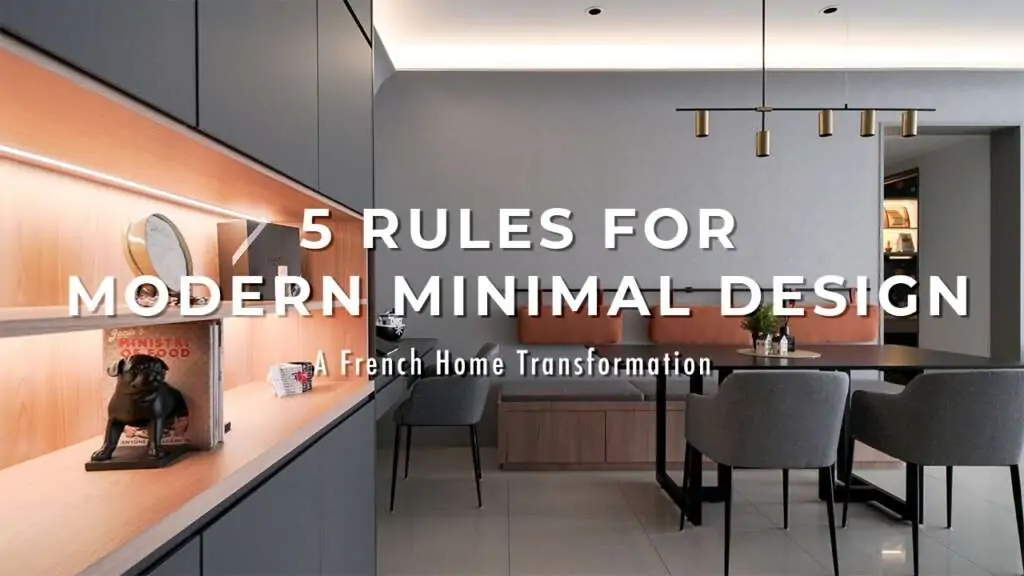The Art of Simplicity: Unveiling the Essence of Minimalist Design
In a world inundated with information and visual noise, minimalist design emerges as a serene and purposeful antidote. Rooted in the principle of less is more, aesthetic mini-design transcends a mere aesthetic choice; it is a deliberate and powerful approach that seeks to distill elements to their essential form.
Tracing the Roots
Minimalism, as a design philosophy, finds its origins in the mid-20th century, gaining prominence in art, architecture, and design. The movement emerged as a reaction to the complexities and ornate excesses of preceding artistic styles, advocating for a return to simplicity and a focus on essential elements. Artists and designers such as Donald Judd, Agnes Martin, and Ludwig Mies van der Rohe played pivotal roles in shaping the foundational principles of this simplified yet powerful design.
Principles of Less Is More
At the heart of minimalism lies the principle of “less is more.” This mantra encapsulates the core ethos of stripping away unnecessary embellishments, leaving behind only what is essential.
“In a world saturated with noise, minimalist branding serves as a visual exhale—embracing simplicity to create spaces that speak volumes with quiet elegance.”
– Ava Simplicity, Influencer in Design, 2023

1. Simplicity:
Aesthetically simpler design champions simplicity in form and function. It seeks to convey a message or purpose with the fewest possible elements, avoiding superfluous ornamentation. This simplicity is not a lack of detail but a deliberate choice to distill design to its essence.
2. Clean Lines and Geometric Shapes:
Embracing clean lines and geometric shapes is a hallmark of simplified design. Straightforward, unadorned lines and basic geometric forms contribute to a sense of order and clarity, creating a visual language that is both understated and impactful.
3. Limited Color Palette:
Aesthetic simplicity in design often employs a limited color palette, with a preference for neutral tones such as whites, blacks, grays, and earthy hues. This restrained use of color emphasizes the purity of form and allows for a harmonious visual experience.
4. Whitespace:
Whitespace, or negative space, plays a crucial role in modernist design. It is not merely an absence of elements but a deliberate choice to create balance, focus, and breathing room within the composition. Whitespace enhances the visual impact of the essential elements.
5. Functionality:
Functionality is a paramount consideration in minimalist art. Each element should serve a purpose, and unnecessary features should be omitted. This focus on functionality extends beyond aesthetics, influencing the usability and practicality of the design.
6. Typography with Purpose:
Minimalist typography adheres to the principle of clarity and legibility. Clean, sans-serif fonts are often preferred, and text is used sparingly to convey essential information. Typography becomes a visual element in itself, contributing to the overall simplicity of the design.
7. Hierarchy and Balance:
Achieving a sense of hierarchy and balance is vital in minimalist design. The strategic placement of elements, their proportionate sizes, and careful consideration of negative space contribute to a visual equilibrium that guides the viewer’s attention.
“Minimalism is the ideal quantity of everything, not a lack of anything. It all comes down to capturing the essence, obtaining focus, and allowing the design to breathe.”
– Max Essence, 2023, Designer of Contemporary Art

Beyond Aesthetics: The Practical Impact
Beyond its aesthetic appeal, it carries practical implications that resonate across various creative disciplines.
1. User Experience in Web and Graphic Design:
In web and graphic design, minimalist principles enhance user experience. Clean layouts and straightforward navigation contribute to intuitive interactions, reducing cognitive load and fostering a seamless user journey.
2. Architectural Harmony:
Minimalist architecture emphasizes functionality and harmony with the surrounding environment. Open spaces, uncluttered interiors, and the use of natural light create serene environments that prioritize the human experience.
3. Effective Branding:
Simpler aesthetics have become synonymous with modern and sophisticated branding. Brands adopting minimalist aesthetics convey a sense of clarity and authenticity, fostering a connection with audiences seeking simplicity and elegance.
4. Environmental Impact:
The principles of designing minimalist art align with sustainable practices. By eschewing excess and emphasizing longevity, minimalist products contribute to a more sustainable approach to consumerism.
5. Artistic Expression:
In the realm of art, minimalist expressions challenge traditional notions and invite contemplation. Minimalist artworks often evoke a sense of calmness and encourage viewers to engage with the simplicity of form and color.
Minimalist Design in Contemporary Culture
Despite challenges and critiques, the timeless allure of minimalist design endures in contemporary culture. From the sleek interfaces of digital platforms to the architectural marvels shaping our urban landscapes, minimalism continues to influence and inspire.
In a world characterized by constant stimuli and visual noise, the allure of minimalism lies in its ability to distill the complex into the essential. It is a visual language that invites contemplation, evoking a sense of calmness and clarity. Whether applied to art, architecture, or branding, minimalist artwork transcends its aesthetic appeal to become a philosophy—a deliberate choice to embrace simplicity in a complex world. As we navigate the intricate dance between form and function, the minimalist strategy of design stands as a timeless guide, inviting us to appreciate the beauty of less and the power of simplicity.


